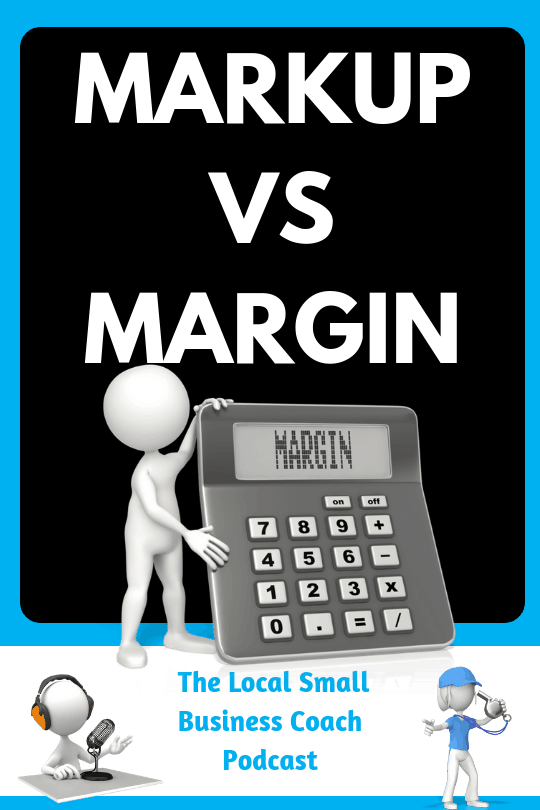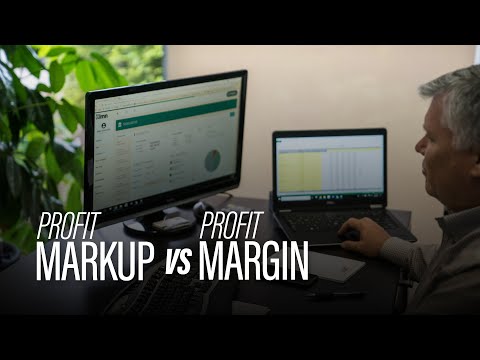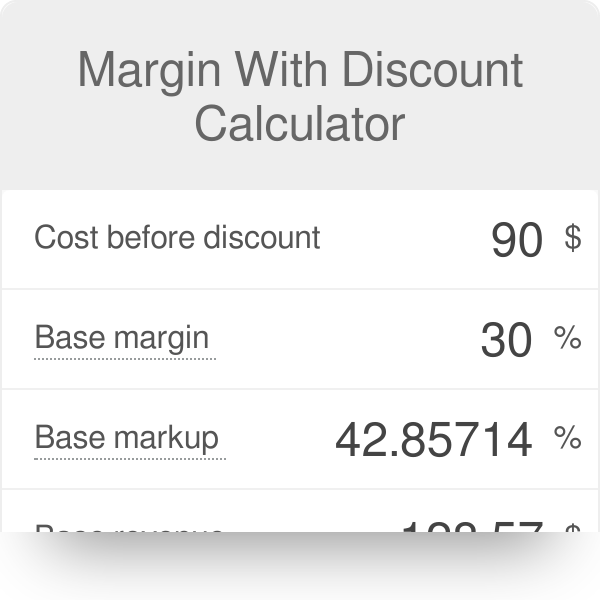What is the difference between profit and margin, in business terms?

In dollar terms, the amount will be the same, but the percentages of margin and markup are very different. The markup percentage calculation divides the difference between cost and selling price by the cost. For the item with a $5 cost and $10 price, the markup is 100 percent, producing a 50 percent profit margin.
If a chair costs you $60 to make and you want to achieve a markup of 75 percent on your furniture, multiply $60 by 0.75 or 75 percent to obtain a markup in dollars, equivalent to the gross profit, of $45. Add this to the cost of the chair to arrive at the selling price of $105. In accounting, the gross margin refers to sales minus cost of goods sold. It is not necessarily profit as other expenses such as sales, administrative, and financial costs must be deducted.
They would be inclined to ask why you don’t carry a gun and wear a mask. Most consumers have had no exposure to the myriad costs associated with retailing and they are used to thinking in terms of net profit margins they have heard in the media. For example, an article in the business section of a newspaper might report that Mega-Mart had sales of $500 million and earned a net profit of 4 percent. An uninitiated reader might conclude that Mega-Mart marks up its goods only 4 percent. In reality, net profit is calculated after overhead expenses have been subtracted from gross profit (total sales less cost of merchandise).
Typically, the profit margin refers to the gross profit margin for a specific sale, which is revenue minus the cost of goods sold, but the difference is shown as a percentage of revenue. The difference between margin and markup is that margin is sales minus the cost of goods sold, while markup is the the amount by which the cost of a product is increased in order to derive the selling price.
Margin (also known as gross margin) is sales minus the cost of goods sold. For example, if a product sells for $100 and costs $70 to manufacture, its margin is $30. Or, stated as a percentage, the margin percentage is 30% (calculated as the margin divided by sales). While the pricing margin is the portion of a products selling price that is your profit on that product, markup is how much you add to the cost of a product to get your selling price.

What is the formula for calculating gross profit margin in Excel?
In general, your profit margin determines how healthy your company is – with low margins you’re dancing on thin ice and any change for the worse may result in big trouble. High profit margins mean there’s a lot of room for errors and bad luck. Keep reading to find out how to find your profit margin and what is the gross margin formula.
And it means companies are reducing their cost of production or passing their cost to customers.[clarification needed] The higher the ratio, all other things being equal, the better for the retailer. If an item costs $100 to produce and is sold for a price of $200, the price includes a 100% markup which represents a 50% gross margin.
The difference between gross margin and markup is small but important. The former is the ratio of profit to the sale price and the latter is the ratio of profit to the purchase price (Cost of Goods Sold). In layman’s terms, profit is also known as either markup or margin when we’re dealing with raw numbers, not percentages. It’s interesting how some people prefer to calculate the markup, while others think in terms of gross margin. It seems to us that markup is more intuitive, but judging by the number of people who search for markup calculator and margin calculator, the latter is a few times more popular.
A mistake in the use of these terms can lead to price setting that is substantially too high or low, resulting in lost sales or lost profits, respectively. There can also be an inadvertent impact on market share, since excessively high or low prices may be well outside of the prices charged by competitors. To calculate a price to get a specific profit margin, divide the cost by one minus the profit margin percentage. So to have a 40 percent profit margin, the cost would be divided by one minus 0.40 or 0.60. From a $10 cost, a 40 percent profit margin would require a selling price of $16.67.

- Gross margin is the difference between revenue and cost of goods sold (COGS) divided by revenue.
Profit Margin vs. Markup: What’s the Difference
Gross margin is the difference between revenue and cost of goods sold (COGS) divided by revenue. Gross Margin is often used interchangeably with Gross Profit, but the terms are different. When speaking about a monetary amount, it is technically correct to use the term Gross Profit; when referring to a percentage or ratio, it is correct to use Gross Margin.
Gross margin is just the percentage of the selling price that is profit. The gross profit margin is the profit margin for a specific sale and is calculated by subtracting the cost of goods sold (COGS) from the revenue.
The basic rule of a successful business model is to sell a product or service for more than it costs to produce or provide it. The difference between the cost of a product or service and its sale price is called the markup (or markon). As a general guideline, markup must be set in such a way as to be able to produce a reasonable profit.
It is very useful to convert the dollar amounts of your profit margin pricing to a margin percentage. The math for margin percentage is the difference between the price and the cost divided by the selling price. Pricing margin percentage allows you to set uniform profit margins on products with different costs or to set margins by the type of product. Using percentages also allows you to calculate an average profit margin for all of the products you sell.
How do you calculate margin and markup?
The difference between margin and markup is that margin is sales minus the cost of goods sold, while markup is the the amount by which the cost of a product is increased in order to derive the selling price. Or, stated as a percentage, the margin percentage is 30% (calculated as the margin divided by sales).
The grossprofit margin is the percentage of the company’s revenue that exceeds its cost of goods sold. It measures the ability of a company to generate revenue from the costs involved in the production. This definition of markup was probably developed to avoid using a term that admits to a 100 percent increase. Most consumers would be appalled that you are selling something for double what you paid for it.
Gross profit is the direct profit left over after deducting the cost of goods sold, or “cost of sales”, from sales revenue. It’s used to calculate the gross profit margin and is the initial profit figure listed on a company’s income statement. Gross profit is calculated before operating profit or net profit.
In other words, Gross Margin is a percentage value, while Gross Profit is a monetary value. This margin calculator will be your best friend if you want to find out an item’s revenue, assuming you know its cost and your desired profit margin percentage.
The gross profit margin is calculated by subtracting the cost of goods soldfrom revenue. The COGS is the amount it costs a company to produce the goods or services that it sells. The income statement line for gross profit margin will help you determine and set the specific profit margins for your products and categories of products. If, during a month, you sell $25,000 worth of products and your wholesale cost for those products was $15,000, your gross profit margin was $10,000 or 40 percent.
Markup Vs. Margin Explained For Beginners – Difference Between Margin and Markup
While pricing margin is the important margin for your business results, it may be easier to calculate prices using a markup percentage. Develop a table or spreadsheet with a corresponding markup for each profit margin percentage you use in your product pricing. Calculate the selling price of an item by adding the desired markup percentage to the cost price.